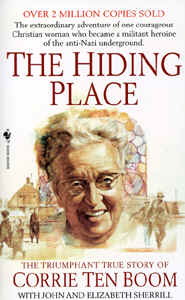Confession: The title of this post (like many links that promise fast fitness or body alteration) was intentionally misleading.
And a canister of air will do nothing about your stretch marks. (At least I don’t think it will….?)
My reason for writing this post is to discuss the problems I see in many fitness- and health-related blog posts and “news” articles. Maybe you see them too. Or maybe you avoid that side of the internet, where citations are thrown to the wind and photo alteration runs rampant.
But maybe, just maybe you see promises of flat abs, banishing cellulite, losing “saddlebags” (who coined that term?!), a perfectly toned body, a natural diet, the best food to reduce arm fat, the ideal blend of anti-aging tea …and begin to wonder if you might be a click away from better health. Or better looks. Or more confidence.
Here’s what I’d like you to know.
- Everyone has an agenda. Everyone. Including me. My agenda is to convince readers that the fitness advice you find on the internet probably isn’t helping you, and everything I say is leading up to that point. Others might be trying to promote a particular brand, promote a certain body type, or even just obtain more hits for their website. Find that agenda and evaluate it.
- We are all finite beings trying to figure out what works. Can we just admit that maybe…maybe we don’t know how life works best? How could we? Yes, we can research and read and experiment. We can observe what works and what doesn’t. But we are not God. (Job 38.) We don’t know everything there is to know about our bodies — how our digestive systems work, what foods damage and what foods benefit, how our muscles can be used best, what wears on our bones and joints most quickly. We don’t know everything there is to know about the food we eat. I freely admit that I don’t have all the answers…and I find it impossible to believe that anyone else has them.
- You are an individual. There’s more than one way to be beautiful. And there’s more than one way to be healthy. There are so many variables: height, body shape, genetics, preferences, health problems, climate, activity level, food budget, sleep schedule, age… While some things can be agreed upon, many things vary from person to person. I couldn’t even begin to speak to what your body needs — it is hard enough to figure out what works for me!
- Opinions still don’t count as facts. Fact: a hardboiled egg contains just over 180 mg of cholestorol. Opinion: you should never eat more than one egg per day.
In college, I actually really enjoyed reading medical and mental health journals. I loved reading about scientific experiments and discoveries. But I’m not as interested in reading that I should never drink orange juice.
Many opinions are valid and even backed up by facts. But many are not. Make sure you evaluate the information you read and look for some proof! (Proverbs 18:17.) - There is more to life than health. Health is important. Undeniably so. Our bodies are temples of the Lord, and we need to take care of them in order to maximize our usefulness in the Lord’s work. (1 Corinthians 6:19.) We are not to be drunkards or gluttons or lazy. (Proverbs 23:21.) We are to glorify God in everything we do, even eating and drinking. (1 Corinthians 10:31.) Yet health is not the center of my life. Christ is.
I do try to make good choices based on what I believe to be sound science and common sense. I have a very real consciousness of trying to maintain and improve my health. But I don’t want to let that consciousness control my life.
Any part of life can start to overpower the rest if we let it. Many people focus on work to the detriment of their family, spiritual life, and their health. Others focus on having fun and ignore everything else. Often I have let school, work, or personal interests become the center of my life.
In the same way, health can quickly become all-encompassing. Life can become a balancing act with food, exercise, and wellness strategies far outweighing anything else. I don’t want my life to look like that. I want to resist my natural tendency tendency to spend all my free time working out, reading about new exercise moves, or feeling dissatisfied about my body.
I can’t tell anyone how to eat, exercise, or live. I can’t tell you what will increase your likelihood of a longer, healthier life. But I would like to remind Christians to live first and foremost for their Savior. He is the one and only source of truly satisfying life!
—
How do you glorify God in your body?












